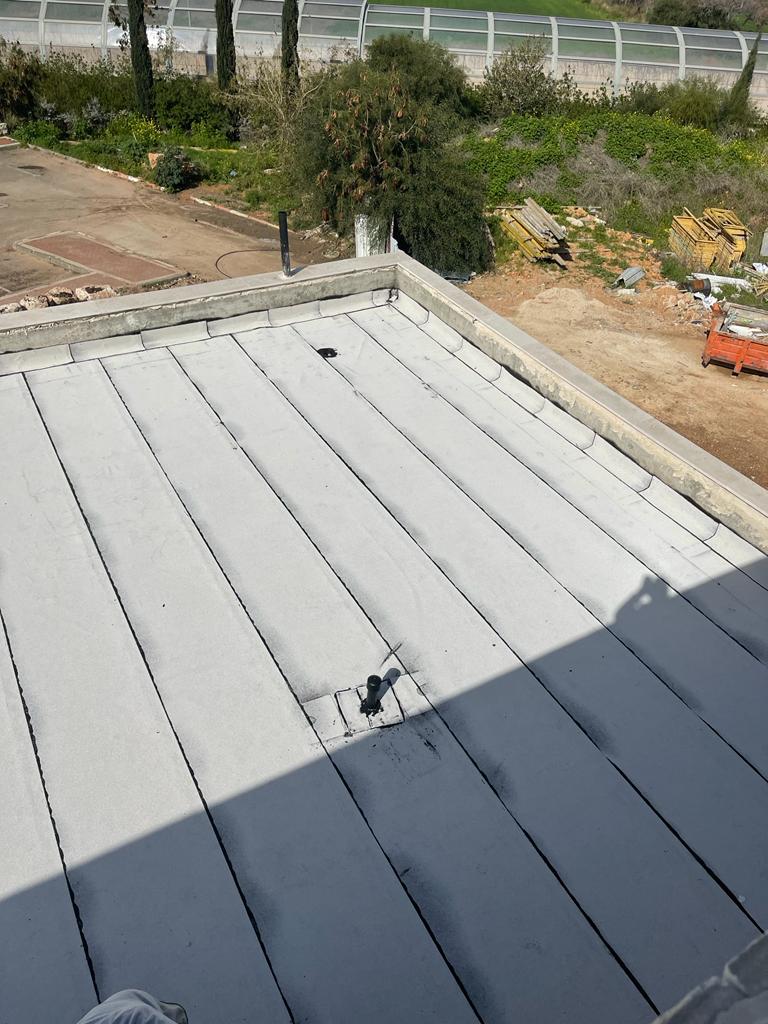There were days when we used to seal roofs with a layer of boiling tar. Once a year, even during droughts, we would drag barrels full of the black material up to the roof, light a fire, whip out a squeegee and get to work. It stank, it was dangerous and most of all, made everyone engaged in the task feel sticky.
The expression “sticky as tar” is disappearing from the world together with the tar era. Today, those looking for advanced roof waterproofing have long found far more convenient, durable and efficient substitutes. The most recommended tar alternative for roof waterproofing mandated by law is bituminous membranes, strong and flexible, 4-5 mm thick, welded together to form a kind of carpet over the entire surface to be waterproofed.
The bituminous membranes allow covering large areas with minimal effort: roofs and concrete surfaces, balconies, below-grade spaces and walls (there are special membranes adapted specifically for waterproofing parapets against roots). By the way, even roofs previously tarred can be converted to bituminous – with proper treatment (more on that later).
And it’s worth the investment: the bituminous membranes provide optimal waterproofing and unlike the tar of yore – last at least 10-20 years. This saves on costs, labor and of course avoids the annual nuisance of checking for leaks (or, heaven forbid, repairing a leak after the fact). Is it any wonder this is the most common waterproofing material on the market?

Smooth to Use – But Requires Proper Handling
However, it is important to know that for the bituminous membranes to deliver the goods, they must be handled properly. First, choose quality membranes, with an Israeli standard mark. Second, it is important to thoroughly clean the surface of any existing debris as dirt trapped under the membrane laid on the surface will flaw the waterproofing. The roof must be smooth, with no protrusions or metal edges that could damage the bituminous membrane texture. If the roof is uneven, fill spaces with cement grout / hot bitumen.
If dealing with a roof that has fixtures (water heaters, antennas, satellite dishes etc.) – they must be removed (temporarily) when laying the membranes. And by the way, if dealing with a wet roof – let it dry out. If you do not provide the proper surface for the membranes you will miss out on their tremendous long-term and even short-term advantages.
What Exactly is a Bituminous Membrane?
The bituminous membrane, as its name implies, is based on a material called bitumen – a thermoplastic product (softening when heated) obtained from the distillation process of crude oil. It resembles the tar of yore, only without the barrels, burners, squeegee and toxic fumes. When welding the membranes, the bitumen embedded in them, enriched with polymer material, softens and becomes viscous liquid. After completing work it cools and hardens.
The great advantage in working with bituminous membranes – in addition to ease of use and optimal outcome – is the armor enveloping the bitumen and protecting it from temperature changes, making the membrane exceptionally durable for many long years. In addition, some membranes come pre-integrated with an anti-root additive and silica sand coating, highly effective especially in waterproofing parapets and roofs where vegetation growth could damage the waterproofing.
And by the way, it is important to know there are two main types of bituminous membranes on the market: APP membranes – the most common type when waterproofing roofs in Israel, as it is material highly resistant to heat and the Middle Eastern sun; the second type is SBS membranes, whose advantage is greater survivability in cold conditions and are therefore suitable for snowy region roofs, as well as for waterproofing basements, shelters and below-grade concrete surfaces.
And Most Importantly: Bituminous Membranes Only From the Experts
The market offerings continue to expand. There are many product types that can provide decent waterproofing solutions, with varying functions and price ranges. Whether you choose to use the popular bituminous membranes solution or prefer an alternative, it is important to know your roof is in good hands: purchase a standard-marked product whose manufacturer and composition you know exactly, and no less important, go with an installer familiar with the work who will not leave you with damage. In short – when making waterproofing decisions, go with the best: Pazkar, because waterproofing is what we’ve been doing since 1934.











